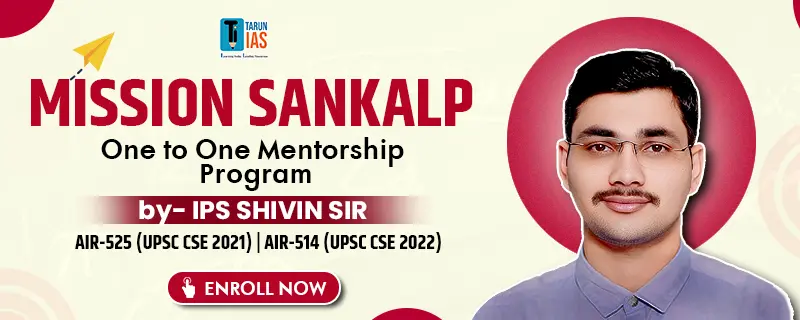Introduction
Prime Minister’s Historic Visit:
-
- PM Narendra Modi’s visit to Vienna marked the first by an Indian PM in 41 years since Indira Gandhi’s visit in 1983.
- This year celebrates the 75th anniversary of diplomatic relations between India and Austria, emphasizing long-standing bilateral ties.
Strategic Timing:
-
- The visit followed Modi’s meeting with President Vladimir Putin in Moscow.
- Austria’s unique position as a non-NATO European country adds strategic significance, particularly in the context of the Russia-Ukraine conflict.
Highlights of PM Modi’s Visit
Economic and Technological Cooperation:
-
- Emphasis on enhancing economic and technological ties, recognizing Austria’s expertise in industries like machinery and pharmaceuticals.
- Launch of a high-level bilateral Business Forum to explore green and digital technologies, renewable energy, and water management.
- Example: Austrian firm Andritz’s involvement in India’s hydroelectric projects.
India-Austria Startup Bridge:
-
- Aimed at fostering innovation and entrepreneurship between the two nations.
- Example: Collaboration between Austrian startup Geogebra and Indian Edutech company Byju’s.
Global and Regional Alignment:
-
- Commitment to a free and open Indo-Pacific region.
- Support for peaceful resolution of the Ukraine conflict, demonstrating a shared commitment to global peace.
Climate Action and Sustainability:
-
- Collaboration on renewable energy, focusing on Austria’s Hydrogen Strategy and India’s Green Hydrogen Mission.
- Support for climate neutrality goals: EU by 2050, Austria by 2040, and India by 2070.
Cultural and People-to-People Ties:
-
- Promotion of cultural exchanges, including the growing interest in yoga and Ayurveda in Austria.
Global Governance Coordination:
-
- Support for comprehensive reforms of the United Nations.
- Mutual support for UNSC candidatures: Austria for 2027-28 and India for 2028-29.
- Invitation for Austria to join the International Solar Alliance.
Read also: Explained India-Bangladesh Relations | UPSC
Evolution of India-Austria Relations
Diplomatic Establishment:
-
- Diplomatic relations initiated in 1949 by Jawaharlal Nehru and Chancellor Leopold Figl.
- Example: India’s support for Austria’s post-WWII reconstruction.
Support for Austria’s Independence:
-
- India’s intervention in favor of Austria during its negotiations with the Soviet Union in 1953, leading to Austria’s independence in 1955.
State Visits:
-
- Nehru’s visit in 1955, Indira Gandhi’s visits in 1971 and 1983, and visits by Austrian Chancellors Bruno Kreisky (1980) and Fred Sinowatz (1984).
- Recent visits by Indian Presidents Narayanan (1999) and Patil (2011), and Modi’s 2023 visit.
Areas of Cooperation
Political Cooperation:
-
- Strengthened by high-level exchanges, ministerial visits, and parliamentary engagements.
- Example: Recent discussions on UNSC reforms and global governance.
Economic Cooperation:
-
- Indo-Austrian Joint Economic Commission (JEC) established in 1983 to enhance bilateral economic interactions.
- Significant bilateral trade, with 2022 figures at USD 2.84 billion.
- Key sectors: steel, manufacturing technology, railways, and metallurgy.
- Example: Wipro Technologies and Shilpa Medicare’s investments in Austria.
Science and Technology:
-
- India launched Austria’s first satellites in 2013, fostering collaboration in space technology.
- Example: PSLV-C20 launch of TUGSAT-1/BRITE and UniBRITE satellites.
Cultural Cooperation:
-
- Historical ties dating back to the 16th century.
- Notable visits by Rabindranath Tagore in 1921 and 1926.
- Contemporary interest in Indian literature, theater, Ayurveda, and yoga.
- Example: Tagore’s famous lecture “The Religion of the Forest” in Vienna in 1921.
Diaspora Connection:
-
- Over 31,000 Indians in Austria, mainly from Kerala and Punjab.
- Predominantly professionals in healthcare and multilateral UN bodies.
- Example: Significant Indian community in Vienna contributing to the healthcare sector.
Significance of Relations
Geo-Political Significance:
-
- Shared values of democracy and pluralism.
- Austria’s support for India’s bid for a permanent UNSC seat.
- Example: Joint statements on global peace and security during high-level visits.
Economic Significance:
-
- Austria’s economic strength and its strategic position in the European Union.
- Important trading partner within the EU, especially with Central and Eastern European countries.
- Example: Increased trade and investment opportunities highlighted during the recent Business Forum.
Technological Significance:
-
- Austria’s expertise in Green Hydrogen and renewable technologies aligning with India’s Green Hydrogen Mission.
- Joint research initiatives in renewable energy technologies, such as collaborative projects on hydrogen fuel cells between Austrian firms and Indian institutions like the Council of Scientific and Industrial Research (CSIR).
Shared Global Perspectives:
-
- Balanced approaches to global conflicts, such as the Russia-Ukraine conflict.
- Austria’s neutral stance based on the 1955 Austrian State Treaty.
- Example: Continued diplomatic engagement with Russia by both nations amidst the conflict.
Challenges in Cooperation
Geographical Distance:
-
- The physical distance limits bilateral engagements.
- Example: Increased travel time and logistical complexities in organizing high-level visits.
Trade Imbalance:
-
- Significant trade imbalance in favor of Austria.
- Example: India’s higher imports of machinery and pharmaceuticals compared to its exports.
Economic Structure Differences:
-
- Diverse economic bases: India’s service and agriculture vs. Austria’s industrial and manufacturing.
- Example: Limited compatibility in some industrial sectors affecting trade penetration.
Visa Issues:
-
- Slow visa policies affecting people-to-people contacts and business travel.
- Example: Delayed visa processing impacting business delegations and tourism.
Read also: The Great Nicobar Island Development Project | UPSC
Way Forward
Mobility Partnership Agreement:
-
- Signing a Comprehensive Migration and Mobility Partnership Agreement to address visa and mobility issues.
- Example: Facilitating smoother movement of professionals and students between the two countries.
Enhanced Cooperation:
-
- Focus on renewable energy, technology, and education.
- Example: Joint ventures in green technology and academic exchanges.
Geopolitical Coordination:
-
- Align on Indo-Pacific strategies and peace efforts in Europe and the Middle East.
- Example: Joint initiatives for regional stability and maritime security.
Leveraging Complementarities:
-
- Utilize Austria’s neutral position and India’s geopolitical influence for mutual benefits.
- Explore synergies between India’s development priorities and Austria’s technological capabilities.
- Example: Collaborative projects in smart city development and digital infrastructure.

